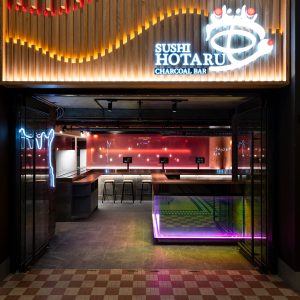

For decades, our society and the development of our built environment have been strongly associated with intensive extractive processes. While these methods were fundamental to the growth of urban areas, they also laid the groundwork for significant challenges that contemporary generations face today. Nowadays, construction debris accumulates on the peripheries of our cities, and plastic waste floats in the oceans.
In this context, and similarly to the idea expressed by Alvar Aalto, who stated that “modern architecture does not imply the use of new materials, but rather employing existing materials more humanely,” it is crucial to reconsider how we manage our resources and waste. This shift in direction provides us with new opportunities to address the challenges that the ongoing climate crisis has brought. In response, various actions are now being taken, using materials such as food waste, recycled wood, and plastic debris, among others, exploring innovations in a context where raw materials are becoming increasingly scarce.
As an exemplary exploration of new materialities, Los Colados is a project that seamlessly integrates plastic waste with concrete. The outcome of this research is a sink that serves as the first piece in a series designed by LOCUS, a Mexico City-based office, in collaboration with Muebles de Concreto. The proposal is rooted in the concept of “wash your hands on the waste you produced,” stemming from concerns about the speed of production and processes lacking recirculation. This prompted a re-evaluation of waste reuse, with a special focus on plastics.
Moreover, the immediate context, shaped by their location in Mexico City —one of the world’s most densely populated, dynamic, and waste-generating cities— prompted the office to propose solutions that upcycled broken, abandoned, or obsolete plastic product remnants scattered around the city.
Described by the design team, the initiative seeks to raise environmental awareness about resource scarcity and extractive processes, to stimulate a re-evaluation of production methods in design and architecture. This redefinition is aligned with rapid climatic, economic, and social changes, demanding a new paradigm around how we use materials.
“In an era where raw materials are increasingly rare, irrespective of their origin or nature, the act of crafting new objects becomes an especially compelling endeavor. — LOCUS”
During the process, the office acknowledged the environmental challenges linked to traditional concrete processes, particularly concerning climate change. The combination of sand mining and greenhouse gas emissions during its manufacture makes it a significant source of pollution, accounting for a considerable proportion of global CO₂ emissions.
The design team proposed an approach that suggests replacing traditional aggregates in casting methods, such as marble or stone. In this context, the manufacture of the sink started with an analysis and inventory of the available resources in the surroundings. This involved collecting SIM cards, remnants of refrigerators, plastic bottles, plates, and computer casings, which were mixed and incorporated as aggregates for creating the concrete piece.
Consequently, the diversity of waste sources and colors incorporated into the aggregate for the sink contributed to an appealing design, distinguishing it from the traditional aesthetics of concrete and terrazzo. This material, usually associated with robustness and sobriety, acquired a new dimension by incorporating elements sourced from waste. In addition, according to LOCUS, “This underscores the need to reimagine its applications, especially considering plastic waste as both a future source of refuse and a potential reservoir of materials worthy of valorization.”Projects like this one sustain the ongoing conversation around sustainability, prompting us to question not only the final destination of our waste but also encouraging creative explorations of various possibilities for its reuse. It demonstrates that through in-depth analysis and inventory of the waste available in our immediate context, it is possible to identify resources that can change established formulas in manufacturing, paving the way for innovative materials and applications that may not have been explored or considered.
Design: LOCUS (Sana Frini, Jachen Duri Schleich)
Materials: Concrete, recycled plastic, and metal
Dimensions: 25 cm in diameter x 95 cm in height (with the tap, 135 cm total height)
Collaborators: Muebles de Concreto
Photography: Armando Juárez
















